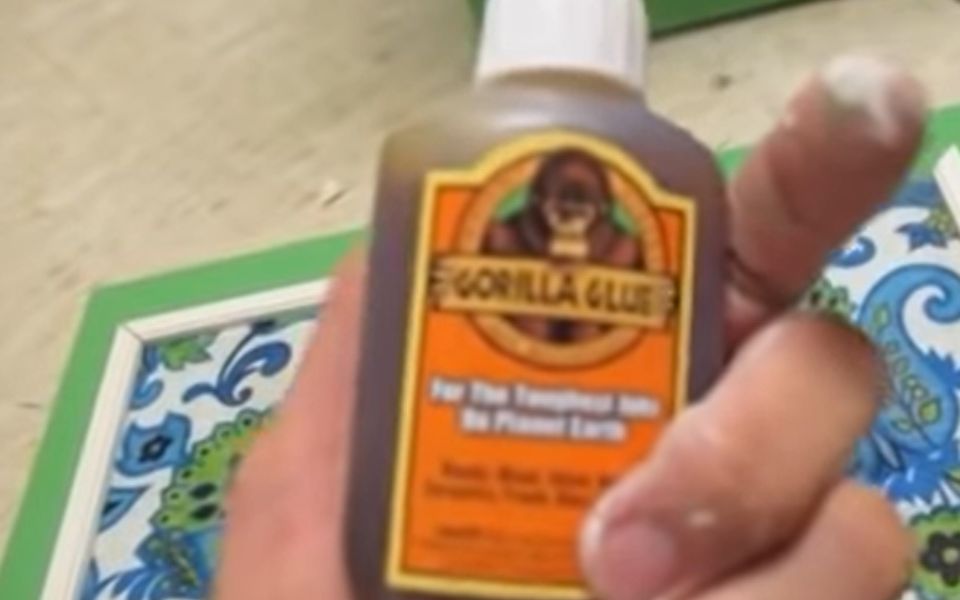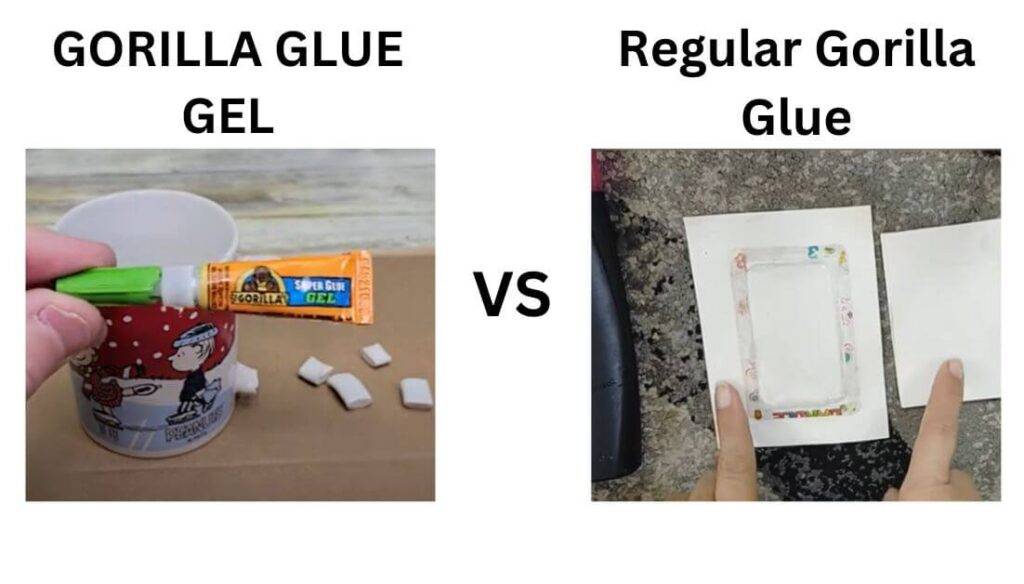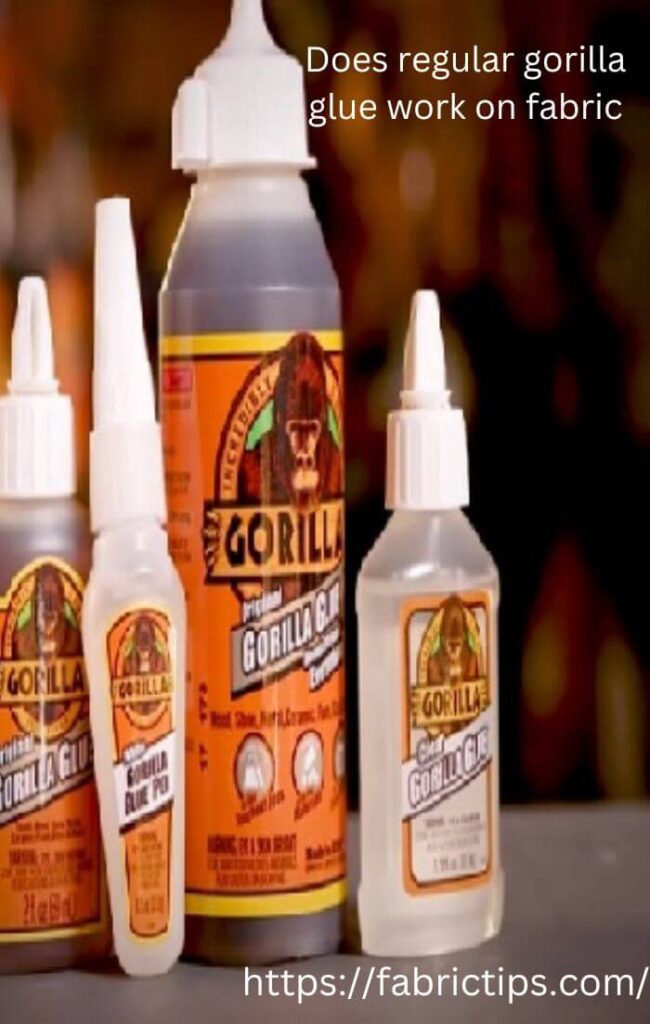Last Updated on January 27, 2024 by Wahid
Whether you’re a DIY enthusiast, a crafts aficionado, or someone in need of a quick fix at home, chances are you’ve reached for a bottle of this iconic glue at some point.
Yet, like all popular brands, Gorilla Glue has evolved to cater to specific needs. Among its range, the two variants that often spark discussion are the Gorilla Glue Gel and the Regular Gorilla Glue. Each has its own set of unique attributes designed for particular tasks. The debate around “Gorilla Glue Gel Vs Regular” isn’t just about preference, but also about which one is more apt for a particular project.
In exploring this topic, we’ll unravel the characteristics, strengths, and limitations of each variant, ensuring that the next time you’re faced with a choice, you’ll be well-prepared. Understanding the differences between these two variants can help you adhere to materials vertically, achieve precision, or ensure a robust bond.
User Testimonials On Gorilla Glue Gel Vs Regular
- Sarah from New York: “I recently tried both the gorilla glue gel vs regular for different home projects. I must say, the gel is a game-changer for vertical applications. No drips, no mess!”
- Mike from San Francisco: “As a woodworker, I’ve always relied on the regular Gorilla Glue because of its strong bond. However, the gel version proved fantastic when I needed precision and control for intricate designs.”
- Rachel from Chicago: “I bought both variants to see which would be best for my crafting projects. The regular is perfect for larger surfaces, while the gel is brilliant for detailed work without any mess.”
- Liam from Houston: “I used Gorilla Glue Gel for a wall art project, and it held up exceptionally well. Previously, with the regular version, I had issues with dripping, but the gel took care of that.”
- Elena from Miami: “Fixing a broken vase, the regular Gorilla Glue was a tad messy. My friend recommended the gel version for another similar project, and the difference was night and day! The gel offered such precision.”
- Arjun from Seattle: “In comparing gorilla glue gel vs regular, I found that the regular variant dries a tad faster. But for projects where I need time and accuracy, the gel is unbeatable.”
- Sophia from Denver: “I had to fix a leaky outdoor pipe temporarily. The regular Gorilla Glue was a lifesaver given its water-resistant properties. I haven’t tried the gel for outdoor projects, but indoors, it’s my go-to.”
- Ben from Atlanta: “The gel version is fantastic for DIY jewelry projects. The precision it offers and the no-drip formula makes intricate work so much easier.”
- Mia from Boston: “Having used both in various crafting projects, I appreciate the versatility the Gorilla Glue brand offers. Whether I pick the gel or regular, I’m assured of a strong bond.”
- Carlos from Phoenix: “For woodworking, I tend to lean more towards the regular Gorilla Glue. But when it came to fixing ceramic and glass items in the house, the Gorilla Glue Gel was a godsend!”
Whether it’s the gel or the regular, users seem to appreciate the strengths of each variant in different scenarios. When it comes to the debate on gorilla glue gel vs regular, it’s clear that having both in your toolkit can offer the versatility needed for various projects.
Direct Comparison: Gorilla Glue Gel Vs Regular
In the great debate of “gorilla glue gel vs regular,” both adhesive varieties have their unique strengths and potential limitations. While Gorilla Glue Gel offers more precision and is particularly apt for vertical applications, the Regular Gorilla Glue is a versatile adhesive, championing bond strength across a diverse range of materials. Well, let’s see the table below.
| Feature/Aspect | Gorilla Glue Gel | Regular Gorilla Glue |
| Consistency: | Thick and gel-like, allowing precision during application | More fluid, which can seep into the pores of materials |
| Drying Time: | Typically takes longer due to its thick consistency | Faster drying time, especially on porous materials |
| Bond Strength: | Strong, but excels in vertical applications | Extremely strong bond across a variety of surfaces |
| Application Precision: | High due to gel consistency, minimizing drips and runs | Might require more care to prevent drips |
| Best Used For: | Vertical surfaces, filling gaps in materials | Versatile; ideal for wood, ceramics, foam, and more |
| Water Resistance: | Once cured, resistant to water | Water-resistant once fully cured |
| Ease of Use: | Less messy, great for beginners | Might be trickier due to its fluid nature |
| Flexibility: | Slightly more flexible post-curing | Tough and rigid bond once cured |
Crafters and DIY enthusiasts should consider the specific requirements of their project. Whether it’s the consistency, bond strength, or drying time, understanding the nuances between Gorilla Glue Gel and Regular can aid in achieving optimal results in their endeavors.
A Deeper Dive: Understanding Adhesive Technologies
From the ancient Egyptians using animal glues for binding materials to the modern chemically-engineered adhesives we have today, the journey of adhesives has been long and transformative. Initially, natural substances like resin, beeswax, and tar were the adhesives of choice, bridging gaps and holding fortresses. With the industrial revolution and subsequent advances in chemical research, we saw the advent of synthetic adhesives, marking a significant leap in bonding capabilities.
“Gorilla Glue”, with its innovative formula, emerged as a revolutionary product in this adhesive timeline. What made it stand out was its ability to bond dissimilar and difficult surfaces with unparalleled strength. As consumers embraced its potency, Gorilla Glue further diversified, catering to specific adhesive needs. This brings us to the heart of our discussion – gorilla glue gel vs regular.
While the “Regular Gorilla Glue” offers a robust bond with expansive capabilities, especially when moisture is introduced. The gel variant is designed for tasks that require a thicker consistency and more control, particularly useful for vertical applications. The journey of Gorilla Glue, from a single adhesive solution to a range of specialized products, mirrors the broader evolution of adhesives, emphasizing the importance of understanding user needs and technological adaptability.
As we continue to explore the nuances between Gorilla Glue Gel and the regular variant, it’s essential to appreciate the rich tapestry of adhesive history that paved the way for such innovations.
Gorilla Glue Gel: Features & Benefits

In the vast landscape of adhesives, Gorilla Glue Gel stands out as a noteworthy innovation. At its core, the distinguishing feature of Gorilla Glue Gel is its unique gel consistency, a departure from the more fluid texture of its regular counterpart. Comprising of robust adhesive agents, this variant promises not only strength but also adaptability across a range of applications.
Typical Applications and Suitable Surfaces: Gorilla Glue Gel, with its thicker consistency, is adept at bonding porous and non-porous surfaces alike. This includes materials like wood, ceramic, metal, rubber, and even certain plastics. A standout feature is its utility in vertical applications, where traditional adhesives might drip or sag.
Advantages:
- Precision in Application: The gel formula allows for pinpoint precision, reducing the chances of mess or waste.
- No Drip Formula: Especially useful for vertical bonds, the gel does not run, ensuring that the glue stays where you apply it.
- Flexibility: The gel formula offers some flexibility when cured, which can be crucial for materials that might expand or contract.
Disadvantages:
- Possible Longer Drying Time: Due to its thicker consistency, Gorilla Glue Gel might require a bit more patience in drying compared to the regular variant.
When examining “gorilla glue gel vs regular”, the gel variant brings forward specific benefits tailored for those special projects that demand a thicker, more controlled adhesive. However, as with all products, it’s crucial to match the adhesive’s properties with the task at hand, ensuring optimal results every time.
Regular Gorilla Glue: Features & Benefits
Stepping into the world of strong adhesives, the regular Gorilla Glue has carved a notable reputation. Renowned for its strong bonding capability, this adhesive is a blend of powerful components tailored to hold different materials together with a lasting grip. When one contrasts “gorilla glue gel vs regular,” the regular formula presents a more fluid solution compared to the thicker gel variant.
Typical Applications and Ideal Surfaces: Regular Gorilla Glue is a versatile adhesive, boasting compatibility with a plethora of materials, from wood and stone to ceramics, metals, and foam. Its penetrative capacity means it seeps into the pores of the material, forging a bond that is built to last.
Advantages:
- Strong Bonding: Recognized for creating an extremely strong bond, suitable for both interior and exterior projects.
- Versatility: With its ability to bond various materials, it’s a must-have in every craftsman’s toolkit.
- Water Resistance: Once cured, regular Gorilla Glue is resistant to water, making it ideal for projects exposed to moisture or outdoor conditions.
Disadvantages:
- Potential for Messy Applications: The more fluid nature can lead to drips or runs if not applied carefully, potentially creating a mess or weakening the bond if too much is used.
Understanding the differences in “gorilla glue gel vs regular” empowers users to choose the right adhesive for their specific needs. While the regular variant is celebrated for its unparalleled bonding strength and versatility, users should be cautious during application to achieve the best results.
Expert Recommendations: Gorilla Glue Gel Vs Regular
Navigating the world of adhesives can seem overwhelming, especially with products as versatile as Gorilla Glue. Let’s break down the scenarios where each variant—Gorilla Glue Gel and Regular Gorilla Glue—shines the brightest.
When To Use Gorilla Glue Gel:
- Vertical Applications: The thicker consistency of Gorilla Glue Gel makes it an ideal choice for vertical surfaces as it prevents drips and provides a more controlled application.
- Gap Filling: Its gel-like nature allows it to excel in filling gaps in materials, ensuring a secure bond even on uneven surfaces.
- Precision Tasks: For intricate tasks that demand precision, such as detailed craft projects or jewelry repair, the Gorilla Glue Gel is the go-to adhesive.
- Temperature Resistance: If your project will be exposed to fluctuating temperatures, the gel version offers excellent heat resistance once cured.
When To Opt For Regular Gorilla Glue:
- Broad Surface Bonding: Due to its more fluid consistency, regular Gorilla Glue spreads easily, making it perfect for bonding larger surfaces.
- Porous Materials: It seeps deeper into porous materials like wood, ensuring a robust bond from within.
- Water Exposure: After curing, Regular Gorilla Glue is highly water-resistant, making it ideal for outdoor projects or items frequently exposed to moisture.
- Multi-Material Projects: The versatility of regular Gorilla Glue allows it to bond a wide range of materials—from ceramics to foam—making it a favorite for mixed media projects.
Tips For Achieving The Best Bond With Each:
- Surface Preparation: For both adhesives, ensure surfaces are clean, dry, and free of dust or grease. Roughening smooth surfaces slightly can also improve the bond.
- Application: When working with Gorilla Glue Gel, a small amount goes a long way due to its thick consistency. For the regular version, be cautious of potential drips, especially on vertical surfaces.
- Clamping: For optimal results, clamp the bonded items for a few hours. This is particularly crucial for regular Gorilla Glue, which can expand as it dries.
- Curing Time: Allow a full 24 hours for the adhesive to cure completely, regardless of the variant you choose.
In the debate between “gorilla glue gel vs regular”, your specific project needs are paramount. Both versions have their strengths and are designed to cater to a wide range of adhesive challenges. By understanding their unique features, you can ensure that every bond is as strong and lasting as possible.
Safety Precautions
Using adhesives safely is paramount to ensure not only the success of your projects but also your well-being. When it comes to “gorilla glue gel vs regular”, there are specific safety guidelines to bear in mind:
1. Proper Handling:
- Wear Protective Gear: Whenever you’re working with adhesives, it’s advisable to wear gloves to prevent direct skin contact. Safety goggles are also essential if there’s a risk of splashing or if you’re working overhead.
- Well-Ventilated Area: Use Gorilla Glue products in a well-ventilated space to avoid inhaling fumes. While both the gel and regular variants are formulated to be low-odor, ensuring good airflow can never hurt.
- Keep Away from Children: Both versions should be kept out of reach of children. Their chemical composition can be harmful if ingested or if it comes into contact with the skin or eyes of little ones.
2. Storage Techniques:
- Cool, Dry Place: Store both the gorilla glue gel and the regular variant in a cool, dry place away from direct sunlight. This will extend their shelf life and maintain their adhesive properties.
- Tighten Caps: Always ensure the cap is tightly closed to prevent the glue from drying out and to avoid accidental spills.
3. Application Techniques:
- Avoid Overapplication: Especially with the regular Gorilla Glue, which can expand as it dries. A small amount usually suffices.
- Use with Care on Vertical Surfaces: The regular variant is more fluid and might drip, while the gel version is designed for precision.
4. First Aid Steps:
- Skin Contact: If either type of Gorilla Glue contacts the skin, try to wipe it off with a dry cloth or paper towel immediately. Then, wash the area with warm soapy water. If the glue has dried, it can be rolled off the skin. Using acetone or nail polish remover can also help, but always read the label to ensure it’s safe for skin contact.
- Eye Exposure: In case of eye contact, rinse immediately with plenty of water for at least 15 minutes. Seek medical attention promptly.
- Ingestion: If ingested, do not induce vomiting. Instead, rinse the mouth with water and consult a physician immediately.
In conclusion, while the battle of “gorilla glue gel vs regular” is mostly about which type fits your project’s needs, it’s equally crucial to handle both with care. Adhering to these safety precautions will ensure that your crafting or repair experience remains a positive one.
FAQs From Reddit & Quora
Q1: Is Gorilla Glue Gel better for vertical applications?
Answer: Yes, Gorilla Glue Gel is specifically designed with a thicker consistency that makes it ideal for vertical applications without dripping.
Q2: How do I remove excess regular Gorilla Glue from my project?
Answer: If it’s still wet, wipe off the excess with a dry cloth or paper towel. If it has dried, gently scraping the surface with a chisel or using a small amount of acetone can help.
Q3: Which Gorilla Glue variant is better for outdoor projects?
Answer: Both Gorilla Glue Gel and regular Gorilla Glue offer strong bonds suitable for outdoor projects. However, the regular variant tends to have more water-resistant properties making it slightly more preferable for prolonged outdoor use.
Q4: Are there significant price differences between Gorilla Glue Gel and regular?
Answer: Generally, the prices are comparable, but it might vary depending on the retailer and the size of the bottle you’re purchasing.
Q5: Can I paint over both types of Gorilla Glue once they dry?
Answer: Yes, both Gorilla Glue Gel and the regular variant can be painted over once they’re fully cured. However, it’s always a good idea to test a small area first to ensure the paint adheres properly.
Q6: Is there a difference in drying times between the gel and regular versions?
Answer: Typically, the gel version might take a bit longer to set because of its thicker consistency, but the difference isn’t significant.
Q7: What surfaces are not recommended for Gorilla Glue products?
Answer: Gorilla Glue, both gel and regular, might not bond well to certain plastics, especially those that are oily like polypropylene.
Q8: Can I use Gorilla Glue for food-related projects?
Answer: No, neither variant is considered food-safe. It’s best to look for adhesives specifically designed for food-related applications.
Q9: How long is the shelf life of both Gorilla Glue Gel and regular Gorilla Glue?
Answer: If stored properly, both products have a shelf life of around 1-2 years. However, once opened, it’s best to use them within 6-12 months for optimal performance.
Q10: Do I need to use clamps when working with Gorilla Glue products?
Answer: Clamping is recommended, especially with the regular variant, to ensure the surfaces are held tightly together, achieving the strongest bond possible.
Q11: Does temperature affect the performance of Gorilla Glue Gel vs regular?
Answer: Extreme cold can affect the consistency and bonding capabilities of these glues. It’s always best to apply them at room temperature and ensure the surfaces are also at a moderate temperature.
Q12: Are either of these glues resistant to solvents and chemicals?
Answer: Gorilla Glue products are resistant to moderate exposure to solvents and chemicals once fully cured. However, prolonged exposure might weaken the bond.
Q13: Which Gorilla Glue type is easier to sand down?
Answer: Both can be sanded once fully cured, but the regular Gorilla Glue tends to be a bit easier to sand because of its slightly more porous dried texture.
Q14: Is there a difference in odor between Gorilla Glue Gel and regular?
Answer: Both are formulated to be low-odor, but some users report a faint, distinct smell, especially when using larger amounts.
Q15: Can these glues be used on fabrics or textiles?
Answer: While they can bond fabrics, there are better adhesive choices specifically designed for textiles. Gorilla Glue, whether gel or regular, might stiffen the fabric upon drying. Does gorilla super glue work on fabric? Yes, it works.
Final Words
In the ever-evolving world of adhesives, Gorilla Glue stands out as a trusted brand that many turn to for their bonding needs. Our deep dive into the Gorilla Glue Gel Vs Regular debate has revealed that while both variants hail from the same family, they serve distinct purposes tailored to specific tasks.
The Gorilla Glue Gel, with its thicker consistency, offers precision and is especially suited for vertical applications, ensuring a mess-free experience. On the other hand, the regular Gorilla Glue is renowned for its strong bonding capabilities on a plethora of materials, making it a versatile choice for a range of projects.
Ultimately, the decision between the two boils down to the specific requirements of your task. Do you need precision without drips? The gel variant might be your best bet. Looking for a powerful bond across various materials? Regular Gorilla Glue is your go-to.







